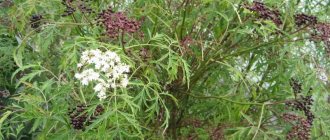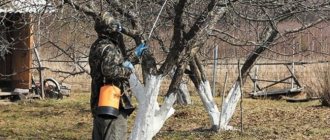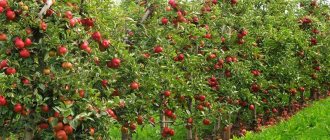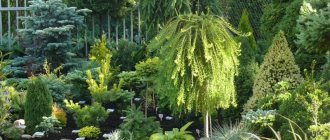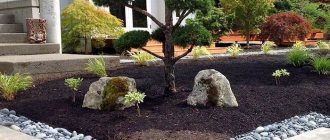Fruit trees and shrubs: how many varieties of apple trees and currant bushes are needed on the site
Galina Kizima is a gardener-enthusiast with 50 years of experience, author of original techniques.
Gardeners have one very favorite rake. We don’t want to come to terms with the fact that pineapple doesn’t grow here, and we plant whatever we like. How can you learn to make your plantings thoughtfully?
Discard those inhabitants of your garden that are of no interest as fruit or berry crops. For decorative reasons, leave in your garden only those that do not require much care and attention. Of the fruit trees and shrubs, plant only those that provide a good yield with minimal labor, and most importantly, sharply reduce the number of such plants.
Fruit trees: how many apples, pears, plums to plant?
apple trees do you have on your property? But you only need three: summer, early autumn and autumn (advice for the northern regions, since late autumn, and even more so winter varieties ripen there once every 5-7 years).
If the family is small, then two varieties of apple trees will suffice: early autumn and autumn. In a good year, you will have enough to eat and will have enough left over to prepare for the winter. During a lean harvest, eat with pleasure.
pears ; they eat, of course, better than apples, but they’re not really good for anything else, they don’t store well, and they bear fruit every year and abundantly.
cherries ; real cherries do not grow anywhere except hot continental places. They get sick a lot; in the northern regions this is a problematic crop. So why do you need her on the site? Well, perhaps for the beauty of the spring garden.
Plums are even worse; in the northern territories they generally bear fruit once every 3–7 years; the trees are unsightly and do not decorate the garden. Plums are not too expensive, buy some to eat. They, like cherries, are cross-pollinated, and therefore you need to plant 2-3 and, moreover, a suitable variety. How will you know about this? When in 4-5 years it turns out that there are a dozen berries hanging on them? Well, that means the pollinator is not the one you need. And all over again.
In the North-West, and therefore everywhere, cherry plums and damsons grow. So raise them. Cherry plum is a large plant, about the size of an apple tree, and you need two of them, preferably self-fertile ones. And the damson is a small plant and will survive alone.
Hybrid cherry plum or Russian plum
These are well-growing trees that produce a large harvest of large and very tasty fruits, which in many respects are superior to the fruits of domestic plums. This tree bears fruit in August and the first half of September. In one area, just as in the case of many other trees, several representatives of different varieties will have to be planted so that they are pollinated normally and bear fruit. According to the timing of fruiting, hybrid cherry plum is divided into several types: varieties that are early in fruiting time (“Zlato Scythians”, “Shater”, “Traveler”, “Kuban Comet”, “Naydena”), late varieties (“Promen”, “Gift to St. Petersburg” ", "Sigma").
What shrubs to plant in the garden
Irga is a tall plant, although it is a bush, unproductive, the berries are insipid, uninteresting, children, however, love to eat them from the bush. But so do birds. Almost half of the crop is destroyed. You can cut it without letting it grow. It will thicken with root growth and form a nice green fence. So plant it as a hedge. Does not require any maintenance. If you let it go, it will reach 4–5 m. Then cut it down to the root. It will grow again.
Sea buckthorn. You don’t need many, you just need one, if there is a male specimen within a radius of 100 m, the harvest is guaranteed. If there is no harvest, you will have to get your own peasant. Most do not harvest the crops, but leave them to feed the birds. The question arises: why are they imprisoned? Obviously, for completeness of the range.
The plant is pretty, it can be trimmed while maintaining the desired height, so you can use it as a green hedge, but only outside the site, otherwise in 10-15 years you will only have to fight its ubiquitous growth, and it is difficult to pull it out.
Actinidia does not so much live and grow here as it barely survives. It’s painful to watch how during spring frosts all the leaves and young shoots freeze completely. This is how the poor fellow suffers every spring. During all the time that I pulled the actinidia out of its half-fainting state, it only gave a harvest once in a rare year without spring frosts, and even with a warm summer. Only 1.2 kg from a fifteen-year-old vine! So she grew old, poor thing, practically barren. I had to remove it. It's a shame I didn't do this right away.
It is believed that Actinidia Kolomikta (the only one that grows in the northern regions) is a beautiful plant for gazebos, pergolas, and walls due to its ability to change the color of its leaves. I’ll tell you honestly that it’s much easier and without any problems to plant virgin grapes for this purpose. He will grow up and be no less beautiful.
Red currants , like black currants, are northwestern plants. Nothing takes them away, they grow and bear fruit perfectly. You just need to acquire good, zoned varieties that are genetically stable. One bush is enough for red, because a good bush produces up to 12 kg of berries annually. Where else? You can’t eat a lot of it, the wine made from it is mediocre, you don’t need a lot of jelly either (however, it’s much tastier with raspberries in a 4:1 ratio).
blackcurrant bush can produce about 6 kg of berries annually, so 3-4 bushes are more than enough for a family.
Gooseberries are a useful plant, even very useful, but caring for them is difficult because of the thorns. The best varieties either freeze slightly due to the level of snow cover, or constantly suffer from powdery mildew. So they will require care. It is better to grow varieties with black-colored berries; they are resistant to powdery mildew and practically do not freeze. If you take good care of 2-3 bushes, there will be enough berries for everything.
Berry bushes will have to regularly cut out aging and therefore poorly fruiting branches, feed and water (black currants), rejuvenate the bushes in time, or even replace them altogether. But if you have a reasonable number of them growing, then it won’t take much time, especially if you do the following:
To protect against pests and spheroteca (American powdery mildew), there is a simple old-fashioned method - in early June, throw a shovel of fresh manure into the middle of the bush. Again, place the tomato shoots under the bushes to disorient the pests with the smell of withering tops.
black rowan is enough, but it is very decorative, so it can be used for decorative decoration of the garden, including for creating a fence.
Japanese quince (chaenomeles) is not of great food value; it freezes above the level of snow cover, but it is one of the first to bloom, and very beautifully.
Honeysuckle is a very useful berry crop; in general, it does not require much care, but for a good harvest you need 2-3 bushes, since the plant is strictly cross-pollinated. In addition, honeysuckle will bear fruit decently only in a sunny place.
Source
Density limit
Now, after the passage of time, I have to admit that, due to inexperience, I got carried away with the planting density of fruit trees: I chose a 2x2 m scheme, with a 1 m shift in the next row. Now I think it's too dense.
Chance intervened. Several years ago there was a winter invasion of mice; they gnawed heavily at the bases of young trees. Not everyone survived the damage. By a happy coincidence, the trees died not in a row, but one at a time. And we planted currant bushes instead. This arrangement seemed to me more successful: on the one hand, there is more space for the crown of trees, on the other, the plantings are quite dense. In this case, a checkerboard pattern is formed by alternating bushes and trees.
Planting schemes in our amateur gardening are a sore subject. Small plots do not fit with the understandable desire to have both this and that in the garden. The author’s current arrangement of plants is quite reasonable from the point of view of space for crown development, however, in my opinion, it is still better to plant berry bushes separately from fruit trees. For example, it is often necessary to chemically treat trees at a time when the bushes do not need spraying, and there are only a few days left before harvesting. And because of the wind, the likelihood of the drug getting on the currants during processing is quite high.
By the way
“We can only trim the crown, not the roots. Therefore, the above-ground parts are much smaller than the root system, and it is easier for such a plant to feed itself,” says Oksana. But in fact, the aboveground and underground parts are closely interconnected and always strive to balance each other. By limiting the size of the crown, you automatically slow down the growth of roots. Therefore, fertilizing must correspond to the external dimensions of the plant.
Does the garden have enough food? Since we have poor sandy soils, we are guided by the principle of “fractional ration”, because otherwise everything is simply washed away by rains, without having time to reach the plants.
This approach to fertilizing is very advisable even on heavier soils, where the likelihood of leaching into deeper layers is much lower. It is especially good if fertilizing is timed to coincide with periods of higher plant need for nutrients and rain or watering.
Photo: Nina Belyavskaya
Which fruit trees to plant in the garden - the right choice for a generous harvest!
When faced with the difficulty and solving the problem of which fruit trees to plant in the garden, summer residents and gardeners must first of all focus on the area of cultivation, the mechanical composition of the soil, the location of groundwater, the climatic conditions of the region, the resistance of the species to diseases and pests, and based on these factors to consider the list of fruit trees and varieties for cultivation...
Video
This video will tell you about the rules for planning a garden plot.
To create the perfect garden, it is not at all necessary to call a landscape designer. By following simple rules for the comfortable arrangement of garden crops, and focusing on the lighting preferences of plants, you can easily plan the site yourself. For clarity, it is advisable to use a paper seating plan, on which you must first mark all the buildings and general nuances of the area. Simple techniques and basic information about the possible location of popular crops are given in our article. A list of the best varieties of repair raspberries is presented at the provided link.
Fruit trees in the garden - making the right and smart choice
Planting a garden begins with a competent selection of fruit trees, because it is this factor that is decisive and fundamental when growing crops in a country house or a plot of 6 acres, especially plantations for sale.
You need to start and build on, first of all, the region in which the cultivation will be carried out, and the answer to the question of which fruit trees to plant in the garden will then lie on the surface, but first things first.
Regardless of where the cultivation will take place, in the Kuban, in the Moscow region, Leningrad region, Kursk, Ryazan, Astrakhan regions, in the Urals or in Siberia, in Ryazan or Torzhok, it is necessary to start from the winter hardiness of fruit trees placed in the garden. It is the winter hardiness of trees that plays a decisive role when planting a garden.
Next, you need to take into account the soil conditions in which you are going to cultivate the crop, so it is worth checking whether the land on the site is suitable for planting a garden, otherwise cultivation can cost you a pretty penny, especially if the garden is located on several hectares.
Also, it is worth considering when you plan to harvest, from early summer or mainly late autumn, the choice of varieties of fruit trees for the garden depends on this. For an amateur garden, it is worth selecting those varieties that will provide a longer fruiting period.
Apricot
This tree is not afraid of frost, and some of its varieties thrive in the Moscow region. Yes, the fruits are not as sweet as in the south, but they are ideal for homemade preparations. The tree bears fruit from the last days of July until mid-August. It all depends on the chosen variety. Early varieties are “Lel”, “Alyosha”, “Tsarsky”, middle ripening ones are “Countess”, “Aquarius”, late fruiting is “Favorite”, “Monastic”. Experts recommend planting several apricots in one garden.
Rootstocks of fruit trees - briefly about the main thing
Having dealt with the question of which fruit trees to plant in the garden, you need to pay attention to the rootstocks of the fruit trees. What rootstocks are best to grow crops on? The most valuable are those rootstocks that inhibit tree growth, accelerate fruiting and increase productivity.
For example, for an apple tree, rootstocks made from vigorous-growing seed crops are not recommended; from medium-growing ones, it is better to give preference to M2, M4, or MM106 with normal soil irrigation. M3 rootstock is used on soils with excessive moisture or on heavy soils. Recommended semi-dwarf rootstocks are M26, MM102, M7, the optimal dwarf rootstock is M9. It is worth noting that crops with dwarf rootstocks require a trellis-supported garden.
In most cases, pears are grafted onto a vigorous rootstock, less often onto semi-cultivated and cultivated species. Plants grafted onto quince are valued. They graft quince onto its own seedlings, peach and apricot onto seedlings of the same species, cherries onto cherries, and less often onto a cherry tree.
Cherries are grafted on the same rootstocks as cherry seedlings. Walnuts are grafted onto the same breed, but hazelnuts reproduce without grafting - with the help of layering, so its culture is always rooted.
All the main points and criteria are listed, all you have to do is choose which fruit trees to plant in the garden, taking into account the above information for the correct planting, so that in the near future you can enjoy a delicious harvest!
Source
Cherry
Likewise, cherries are characterized by high frost resistance. These fruit trees provide excellent material for canning and making compotes, jams, and juices.
Most often you can buy cherries grafted onto bird cherry seedlings. At the same time, the growth force increases. However, cherries on bird cherry are suitable for more fertile soils.
Among the varieties of cherry fruit trees recommended for growing on the site, it is worth mentioning “Northern Star” and “Panda 103”. "Northern Star" is a medium-sized, sour cherry variety. The fruits are suitable for fresh consumption.
They ripen in early July. When cultivating this variety, the pleasant thing is the early onset of fruiting, abundant and annual, as well as low sensitivity to the disease - small leaf spot.
A little later, around mid-July, the variety “Panda 103” ripens . The fruits are large (6 to 7 g) and can be used as a dessert.
The North Star cherry variety is frost-resistant and insensitive to mono-insects and bacterial canker.
Choosing trees for the garden
Berry bushes and fruit trees will become a real decoration of the site. Starting a new garden is a very responsible and difficult task. Many factors are taken into account:
Site plan
Before planning where and what tree to plant, you need to designate the garden area.
Having decided on this, you need to remember that each tree and shrub requires a certain free space in order for the plant to grow and develop normally. If vegetable crops will also be grown in this area, then you need to determine in advance the location for the greenhouse and beds. According to the advice of experienced gardeners, they should be placed on the site in the south and east. Low shrubs can be planted near the beds so that during the period of growth and development their crown does not shade the plants in the bed.
After the bushes, at a certain distance from them, trees can be planted. They do not grow so quickly, but you need to leave a distance of 4-5 meters between them, with an eye to the future. The distance between bushes should be at least 2 meters.
To prevent the root system of trees from damaging the foundation of the building in the future, you need to retreat from it at least 3-4 meters. If you plan to plant shrubs near your house, then this distance should be at least one and a half meters.
If you are new to this issue, then it is best to first draw a site plan on paper.
First, all the buildings that exist are designated, then those that you plan to build; paths and other objects are drawn. If the area allows, then it is advisable to fence the future garden to protect it from strong winds.
If the area of the future garden is small, and you want to place as many suitable fruit trees as possible on it, then they should be planted in a strict geometric order. Such a garden will be practical.
On a large area of the site, you can allocate space for ornamental plants and structures.
Lighting mode
Given the different heights of mature trees and shrubs, you need to arrange them depending on the degree of illumination of the area.
Some require plenty of sunlight, while others prefer partial shade. Light-loving garden trees and shrubs include :
Shade-loving crops:
Most shrubs grow and develop well in the shade; they can be alternated with tall trees. You can plant shrubs along the fence, maintaining the required comfortable distance.
Before buying warm-season crops, you need to be sure that you will have time to harvest. Otherwise, such trees will simply be useless in your garden. The best option would be early varieties or those that are adapted to your area.
You should not take risks and plant incompatible crops nearby. Their list is provided below.
Plant compatibility
This factor should be taken into account so as not to get an unexpected result.
Some types of trees will not be able to live next to each other. One of the most unpleasant neighbors is the walnut, next to which no tree or shrub will be “comfortable”, since this tree has a powerful root system and a dense crown. The root system takes all the necessary nutrients from the soil, and the crown blocks sunlight. Walnut leaves contain a large amount of tannins, which over time will make the surrounding soil unsuitable for growing other plants and even flowers.
If you want to grow a nut on your plot, then you need to know that the minimum distance from it to other plantings can be at least 18 meters. Given this fact, it is worth considering whether you need such a tree.
Trees that should not be planted nearby:
With this information, it will not be difficult to place “good” neighbors nearby. In general, if the distance between trees and shrubs is maintained correctly, most of them get along well with each other.
Crops that can be planted nearby:
The apple tree, as you can see, turns out to be a wonderful neighbor not only to fruit trees, but also to conifers.
To create the perfect garden, it is not at all necessary to use the services of landscape designers. Having studied useful literature on this issue and the above material, you can easily cope on your own.
Variety of varieties
Varieties of columnar fruit trees are divided into two varieties:
- seed dwarfs, which are grown from seeds and have a natural gene for short stature (dwarf gene);
- grafted dwarfs, they are obtained by grafting twigs from mother columnar plants to the root system of a related ordinary tree.
varieties of apple trees "Orlinka" varieties of pears
Important! A miniature garden not only enters the fruiting season faster, but also becomes depleted earlier, ages and dies. After 10-12 years, you need to rejuvenate the plantings, uprooting old trees and planting new ones.
Popular varieties of columnar apple trees: Apple tree “Currency”. Apple tree "Arbat" - a dwarf variety, small fruits (100-120 grams), skin and pulp of apples dark cherry color
The apples are tasty and juicy, but the variety is not intended for long-term storage; when stored for the winter, it quickly deteriorates;
The Arbat apple tree is a dwarf variety, the fruits are small (100-120 grams), the skin and pulp of the apples are dark cherry in color. The apples are tasty and juicy, but the variety is not intended for long-term storage; when stored for the winter, it quickly deteriorates;
Apple tree “President” - the variety has excellent winter hardiness and is little susceptible to fungal diseases and insect pests. The fruits are small and medium in size, apples weigh 140-250 grams. The color of the peel ranges from white to pale yellow, like “White Filling”, the flesh is juicy, the color of the pulp is light. Harvest time begins in mid-September.
Popular varieties of columnar pears:
Decorah pear is a dwarf plant, does not exceed a height of 1.5-2 meters. Pears are medium-sized (150-200 g), have a pronounced pear aroma and sweet sour flesh. The fruits are very juicy; when fully ripe, the skin turns burgundy. Ripening time is the second half of August. This wonderful variety has a significant drawback - the fruits are stored for no more than 10-14 days.
Sapphira pear is a variety with good resistance to frost (down to -20 °C). It has a good yield; ripe pears are colored in three shades that smoothly fade into each other (green, yellow, red). The harvest of this variety has partial shelf life and can be stored without loss until December.
Popular garden crops
Let's consider fruit trees that take root in all regions:
Selection of planting material
When purchasing planting material, you need to pay special attention to the root system - it must be alive. It is unlikely that you will be able to buy one at an exhibition-fair, since all the material there is imported, was dug up unknown when, and its roots have long since dried up.
Experts recommend going to a local nursery, which has proven itself well, to buy seedlings. On the spot, you can decide on the variety and choose the ideal seedling, which will be dug up right in front of you. If transportation time may take 2-3 days, then it is advisable to take care of the roots of the planting material during this time.
Immediately after the seedling is dug up, you need to wrap the roots with wet newspapers and then with plastic wrap. In this state, even small roots will remain alive.
The younger the seedling, the easier it will be to take root in a new place. Experts in this industry recommend buying annual seedlings, which will also be cheaper.
If your purchase turned out to be unplanned and you did not prepare a place for planting, do not be upset. Plant it in any vegetable bed. The plant will grow and get stronger within a year, and in the meantime you can prepare a place for it and fertilize the soil.
Do not worry that fruit and berry trees will suffer due to transplantation. Stress helps to strengthen them, after which the fruits will be large and juicy.
Caring for growing plants involves modern pruning. Already from the third year of their life, mineral fertilizers must be applied.
Planting a seedling in the ground
When the choice of trees and varieties that you want to see on your site has been made, then you can begin planting them. Seedlings can be planted both in spring and autumn. It is important to find out what kind of soil they like and what to feed them in spring and autumn.
It is better to plant trees together, as you need to carefully straighten the roots in all directions. If planting is planned in the fall, then you need to bury the plant in the ground so that the root collar is 5 cm above ground level, because it will settle. To plant seedlings in the spring, you need to prepare the planting hole in the fall.
The soil needs to be fertilized and make sure that there is no groundwater nearby, which will impede the growth and development of seedlings.
Fruits grown with love will delight you with a delicious harvest throughout the season.
Source
